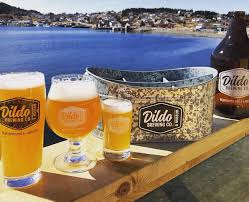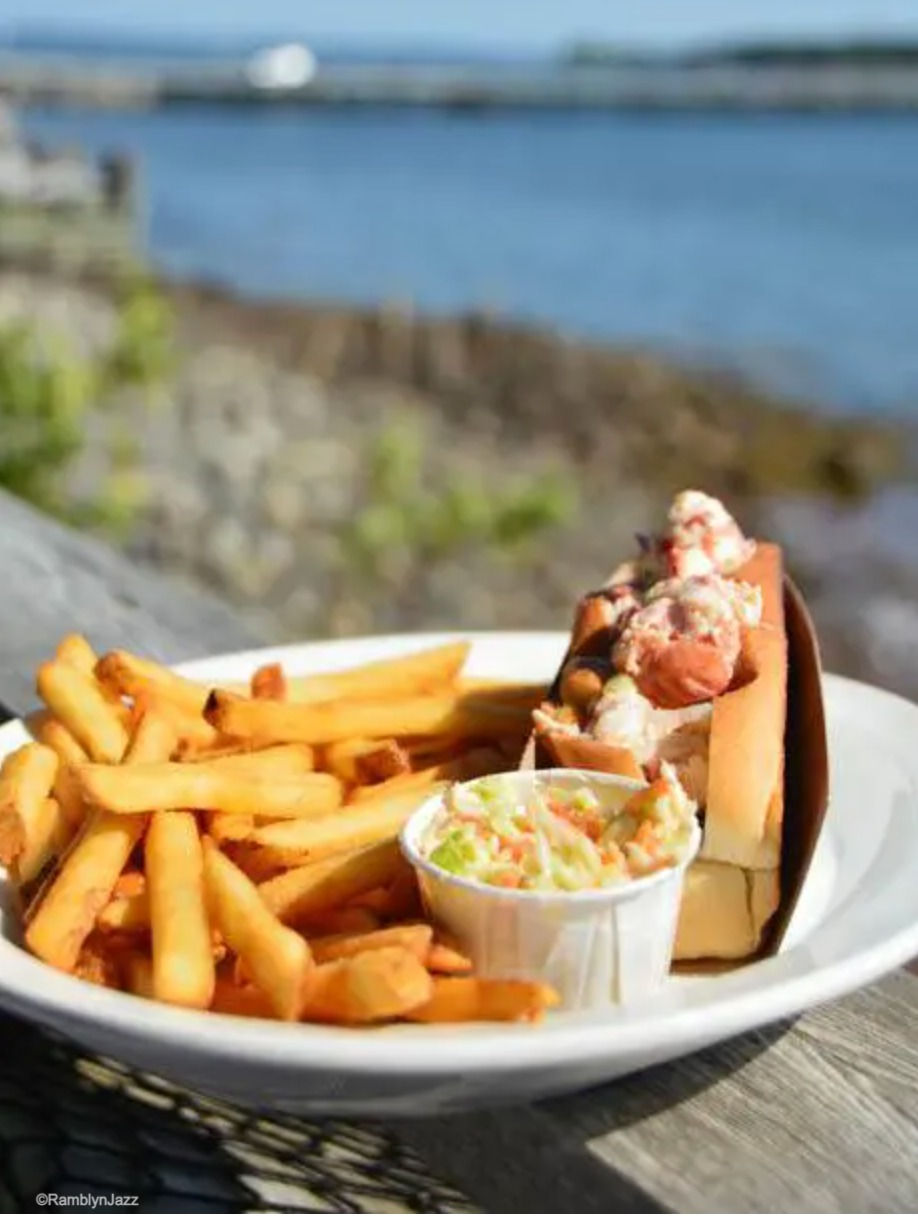A Guide to Eating Your Way Around Canada's Eastern Provinces
- Lyn (aka Jazz)

- Jun 10, 2024
- 6 min read
Updated: Sep 18
Exploring the foods of their destinations is a primary joy for many travellers, including me. My road trips through the eastern provinces of Canada led me on a delicious adventure. as I savoured fresh seafood by the Atlantic coast and relished traditional Acadian dishes.
Officially, New Brunswick, Nova Scotia, and Prince Edward Island are considered the "Maritime provinces," but when Newfoundland is added, this grouping is known as the "Atlantic Provinces." This region is rich with natural resources and a blend of Indigenous, French, British, and Irish culinary influences, focusing on seafood and locally grown produce. Come meander with me to discover tasty treats as you eat your way around Canada's eastern provinces.
Table of Contents
Eating in Eastern Canada: An Overview
The region's cuisine is heavily influenced by the abundant natural resources, with each cultural group adding their special touches and flavours.

Indigenous Influences
Before European settlers arrived, the Indigenous people hunted, fished, and gathered various foods, including fish, shellfish, game, berries, and roots. Popular dishes included corn, beans, squash, and sunflower seeds. Food was preserved for use throughout the year by smoking, fermenting, and drying. Many establishments offer menu items highlighting smoked and fermented dishes.
French and Acadian Influences
The first European settlers to the area were the French who introduced stewing and baking techniques and an appreciation for dairy products. Acadian dishes like rappie pie, a grated potato and meat pie, and poutine râpée, a boiled potato dumpling filled with pork, are still popular with locals.
British and Irish Influences
When the Brits and Irish arrived, they brought a taste for potatoes, cabbage, and oats, as well as canning and pickling techniques. Settlers in Newfoundland developed fish and brewis (made from salted cod and hard bread) and Irish stew. Many restaurants and pubs in the area offer dishes such as corned beef and cabbage, bacon and cabbage, bangers and mash, and fish and chips,
Exploring Eastern Canada, One Bite at a Time
My trips to the area have all been road trips, visiting multiple provinces in each trip. In New Brunswick, I discovered the fusion of French and English menus. I indulged in poutine and lobster rolls. I will never turn down a lobster dinner or a bowl of seafood chowder in Nova Scotia. Scanning menus and sampling the "daily catch" or "farm-fresh" specials will become a ritual. In Prince Edward Island, potatoes and oysters are king. Newfoundland continues the seafood theme, with cod being an essential staple on every menu.
Vegetarians and vegans will find plenty of choices. Locally grown vegetables, grains, dairy products, and fruits are used to create stunning vegetarian and vegan options. Great pride is demonstrated in promoting the growing foodie culture, which attracts innovative chefs who focus on locally produced ingredients.
Unique Eastern Canadian Eats
Seafood is vital in the Maritimes and is prepared in many ways. Lobster rolls, lobster dinners, and seafood chowder are the most common. Seafood chowder recipes are flexible depending on the daily catch and produce available but will usually include shellfish, white fish, and vegetables in a creamy potato base served with bread. Travellers with smaller appetites will find a bowl of chowder is a full meal. Lobster dinners usually include a whole steamed lobster served with salad, bread, and melted butter. A lobster roll is a buttery bread roll over-stuffed with tangy lobster salad. Oysters are a popular Prince Edward Island delicacy.

Poutine is a Québecois specialty that has become a favourite of Canadians across the country. The basic recipe is a plate of French fries sprinkled with cheese curds melted with a thick and savoury gravy. Additional toppings, such as meats and vegetables, can be added to make it a truly spectacular treat. My favourite poutine topping in Eastern Canada is lobster.

The Acadian poutine râpée is a slow-simmered potato dumpling usually stuffed with salted pork, traditionally served as a main course. A dessert version is a sweetened potato dumpling covered with brown sugar, molasses, or maple syrup.

Rapée/rappie pie is an Acadian poultry dish. made of grated potato, onion, and chicken served with a broth sauce.

Dulse is a purple-black seaweed that grows along the New Brunswick and Nova Scotia coasts and has a flavour similar to bacon. Some Maritimers eat dried dulse as a crunchy salty snack, like potato chips. You'll see it used as a side dishes, appetizers, and as an ingredient in stews, casseroles, and soups, Check out the dulse, lettuce and tomato (DLT) sandwich the historic Saint John City Market.

Potatoes are a mainstay crop in New Brunswick and Prince Edward Island. Hash brown casserole made with potato, cheese and cream, and potato pancakes are popular breakfast dishes. Expect delicious potato salads, soups, baked potatoes, frittatas and fries.

Maple sugar is a traditional sweet used in syrups, candies, and cookies that tastes delicious and is very important to the Canadian economy. A treat during the winter months is to pour hot syrup onto a bed of clean snow, creating a warm, soft maple chew.

Ice Cream: Canadians are very fond of ice cream. Look for small shops with long lines. Cow's Ice Cream is an artisan ice cream (and T-shirt) company from Prince Edward Island with locations nationwide. Make sure to add some Cow Chips (chocolate-covered potato chips) to your order. You'll have to make multiple trips because there are so many delicious flavours. My favourite is Cownadian Maple, with maple ice cream, swirls, and cookie bits.

Grunt: Wild blueberries are abundant in the Maritimes. They are smaller than commercially available blueberries but are more sweet and tangy. They are often used in an Acadian dumpling/cobbler-style dessert called blueberry grunt.

Hodge Podge: The Nova Scotian dish called hodge-podge or hodegy-podegy seems to be on every menu in the Annapolis Valley. This vegetable stew/soup highlights fresh seasonal vegetables such as small baby potatoes or new potatoes, fresh peas, green beans, wax beans, and carrots. It is cooked in a milk broth that contains butter, pepper, and salt. This summer dish is often served accompanied by corned beef.

Lady A Pickles Lady Ashburn was a popular high-society patron in Fredericton during the early 1900s and is credited with developing the homemade mustard pickle recipe that has become a regional delicacy and an essential part of holiday meals. The homemade mustard pickles are sold at locally owned supermarkets and farmer's markets.

Jiggs Dinner When visiting Newfoundland, many establishments offer a Jiggs Dinner (also known as a boiled dinner). This is a traditional Sunday dinner consisting of salt beef, boiled with root vegetables and greens. Condiments usually include Lady A pickles, pickled beets, cranberry sauce and a thin gravy. It is often served with pease pudding, a savoury mushy pea side dish) and followed by a dessert of figgy duff (a steamed pudding similar to English spotted dick).

Craft Brews There are many small craft breweries in the Maritimes, including the flagship Maritime breweries of Nova Scotia's Alexander Keith, Prince Edward Island's Gahan House and Newfoundland's Dildo brewery (it's the town name!). The major cities throughout the Atlantic region have popular brewery areas and tasting trails, allowing visitors to explore a wide range of small-batch artisan brews.

Final Thoughts
There are many reasons to put Atlantic Canada on your travel bucket list, including historic sites, outstanding hospitality, stunning landscapes, and an expanding foodie scene. Whether you are looking for inexpensive street food and cafés or elevated dining experiences, you will find a culinary adventure sure to please both your tummy and taste buds.
If you are enjoying the content and would like to be kept up to date with new posts, become a member/subscribe (it's free!) and follow along on the RamblynJazz Facebook page, Facebook Group, Twitter, and Instagram. You can help the blog to grow by sharing the link with a travelling friend or through social media. I genuinely appreciate your comments and encourage you to share your thoughts below.








I ate lots of poutine when I was in Canada and loved the different varieties they offered but for sure lobster would be at the top of my list for this area,
I never thought of traveling around the area on a food venture but your post shows how that can be done.
The food definitely is of the hearty, filling type rather than light cuisine though. I guess the climate there often dictates the need for that type of nourishment.
All the photos are drool-worthy! I believe that, given the gastronomic influences, there is a huge variety of flavors and ways of cooking the dishes. What caught my eye most was undoubtedly the seafood and the ice cream, both of which are my favorites. Angela | Blonde Around The World Travel -
I'll admit I didn't think I was going to find a lot in this post that would have me salivating enough to want to visit the eastern provinces this quickly. But I was wrong. The desserts, poutine râpée especially, sound wonderful, and I'm a fan of anything potato (as a Brit I guess I'm rolling with the stereotype and part of why this region still has so many potato dishes). The hodge podge sounds fantastic
I'm already hungry (it is nearly lunch time in Europe) and now I really want some Poutine. This was a fantastic read and I'm happy to know more now about Canadian cuisine. It is very potato-focused but all dishes presented looked appealing and tasty. I would order anything from your list right now, please send a bowl of baked potato soup my way.
Carolin | <a href="https://solotravelstory.com/">Solo Travel Story</a>
My mouth is watering reading this post! So many incredible dishes. I'm intrigued by poutine râpée - I love a good poutine and to get a local specialty with it would be ideal. I love the combination of French and Canadian like the lobster! Yum!